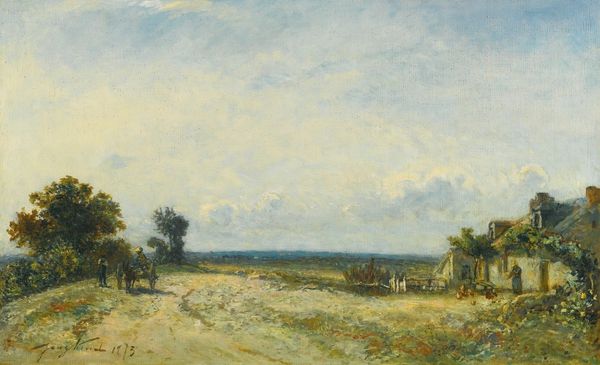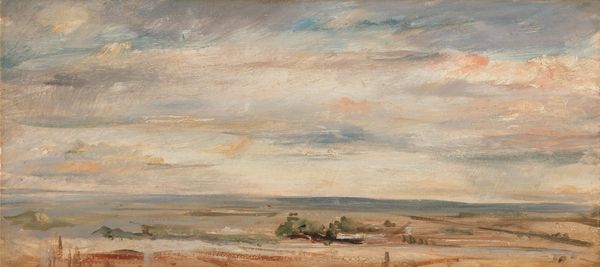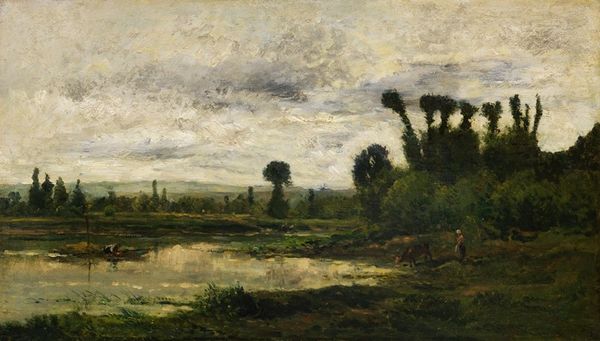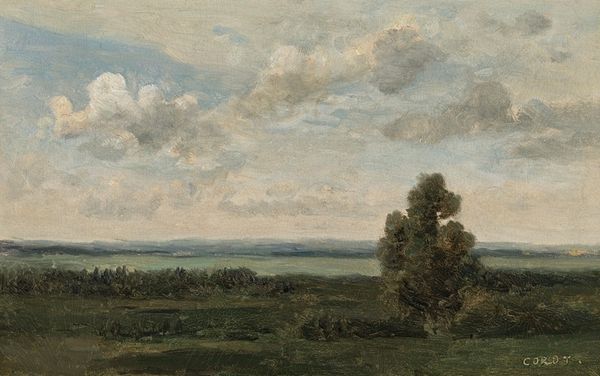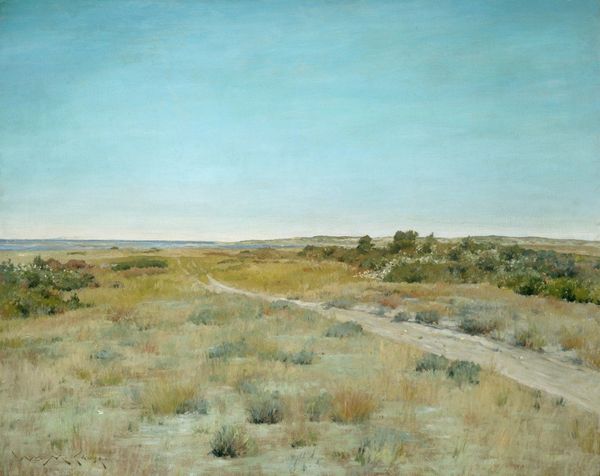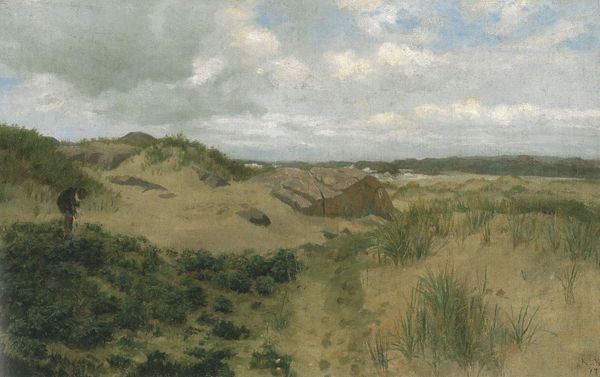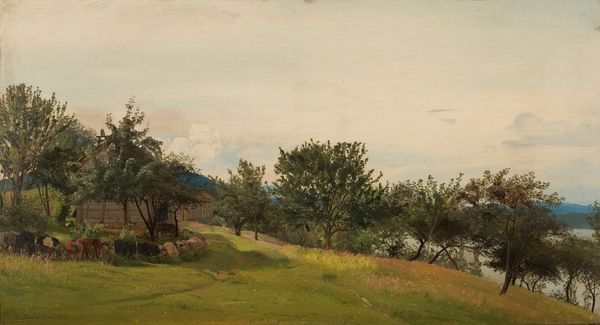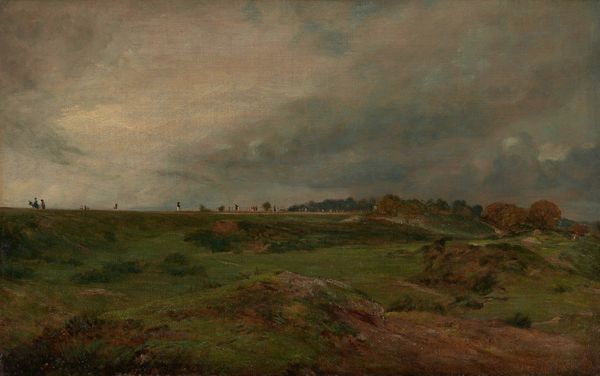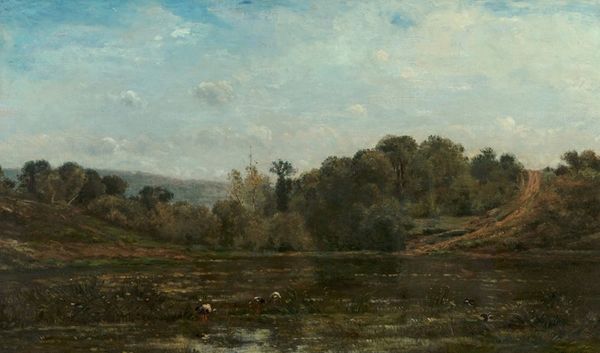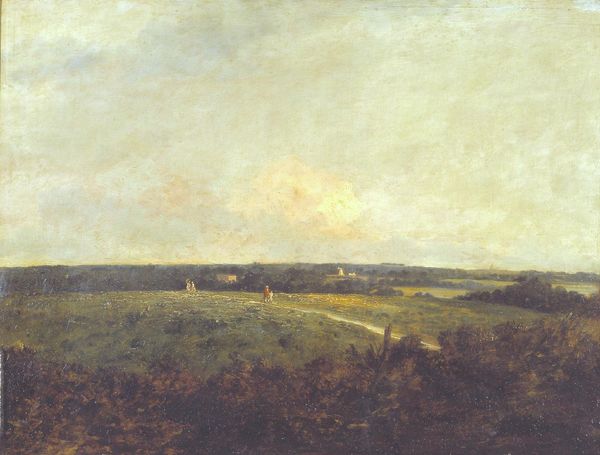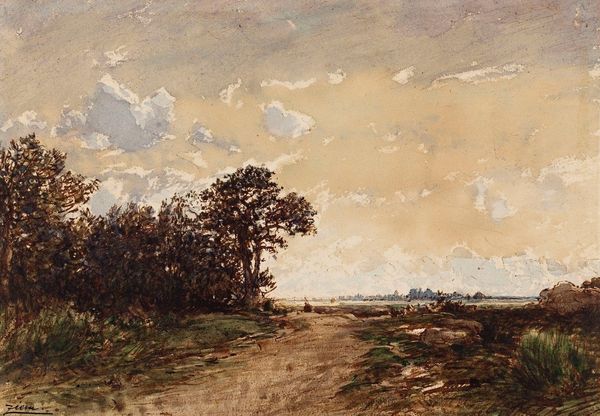
Copyright: Public Domain: Artvee
Curator: We're now observing "East Slovak Landscape," a compelling 1894 oil on canvas by Ľudovít Čordák. What are your initial impressions? Editor: It’s… muted. A very limited palette. The overall impression is quite subdued, almost melancholic, despite being a landscape. Note the even distribution of light; there aren’t strong contrasts. The subtle tonality dominates, a testament to observation of specific environmental conditions. Curator: I’m drawn to how Čordák situates himself within the broader tradition of plein-air painting, while also representing a specific socio-economic moment. Consider how rural labor and life are intertwined in Slovakia at the end of the 19th century. The earthiness of the pigments reflects a tangible relationship to the land, the painting produced directly in contact with its subject. Editor: Yes, but consider the application of paint itself. See how Čordák uses relatively short, broken brushstrokes, especially noticeable in the foliage. This, combined with the airy sky, gives the composition an impressionistic quality—even though it predates many high-profile Impressionist landscapes. And there's certainly a romantic sentiment here. Curator: Interesting. But I believe it is rooted in more realist concern, especially looking into the material basis for representing reality: canvas texture, oil mixing, plein-air practice all suggest close, hands-on working process. Editor: Perhaps, but realism is just one aspect. Let’s not ignore the delicate composition. Notice the subtle interplay between the horizontal lines of the landscape and the gentle curves of the river. How this visual structure creates depth and invites the eye to explore. Curator: True, these stylistic choices also mediate how rural work becomes ennobled through romantic associations within the painting. By elevating it with a sublime, even godly visuality. Editor: Well, in this moment I think it shows just how multifaceted a simple landscape painting could be. From technique and tone to content, there are several interpretations layered. Curator: Exactly, engaging with its physical reality, it allows me also consider how artistic production shapes and is shaped by our interaction with its topic. The historical and aesthetic dimension comes to the fore.
Comments
No comments
Be the first to comment and join the conversation on the ultimate creative platform.
